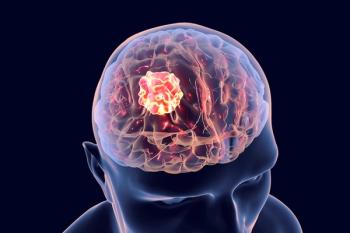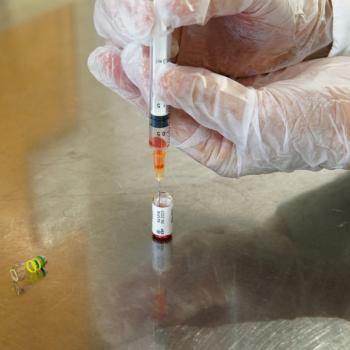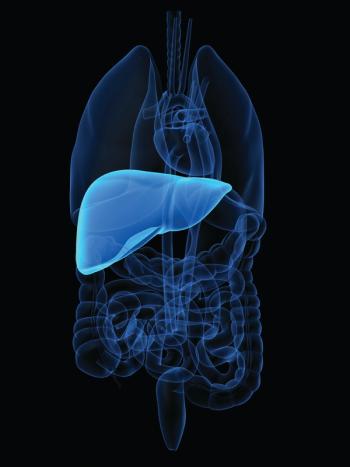
Dato-DXd Receives Priority Review in Pretreated EGFR-Mutated mNSCLC
The FDA accepted a BLA for Dato-DXd based on data from the TROPION-Lung05, TROPION-Lung01, and TROPION-PanTumor01 trials.
The biologics application (BLA) for datopotamab deruxtecan (Dato-DXd) has been approved and granted priority review by the FDA in the treatment of adult patients with advanced or metastatic EGFR-mutated non–small cell lung cancer (NSCLC) who have received prior systemic therapies, according to a press release from the developer, Daiichi-Sankyo.1
A Prescription Drug User Fee Act date of July 12, 2025, has been set.
Data from the phase 2 TROPION-Lung05 (NCT04484142), the phase 3 TROPION-Lung01 (NCT04656652), and the phase 1 TROPION-PanTumor01 (NCT03401385) trials supported the FDA’s decision.2,3,4
The FDA
“Treating advanced EGFR-mutated NSCLC presents a significant challenge due to the limited efficacy of available treatments once the disease has progressed following front-line therapies, including the use of an EGFR tyrosine kinase inhibitor,” Ken Takeshita, MD, global head of research and development at Daiichi Sankyo, said in the press release.1 “If approved, Dato-DXd could become the first TROP2 directed antibody drug conjugate for lung cancer, providing a promising option for patients.”
TROPION-Lung05
The single-arm, open label phase 2 TROPION-Lung05 trial yielded a confirmed overall response rate (ORR) of 35.8% (95% CI, 27.8%-44.4%), overall. In those with EGFR mutations and ALK rearrangements, confirmed ORRs were 43.6% (95% CI, 32.4%-55.3%) and 23.5% (95% CI, 10.7%-41.2%), respectively. The overall disease control rate (DCR) was 78.8% (95% CI, 71.0%-85.3%) and the median duration of response (DOR) was 7.0 months (95% CI, 4.2-9.8).
Treatment-related adverse events (TRAEs) of grade 3 or higher were observed in 28.5% of patients; the most common were stomatitis (9.5%), nausea (2.2%), decreased appetite (2.2%), fatigue (1.5%), and asthenia (1.5%). There were 2 AEs associated with death, a serious event of NSCLC (dyspnea) and a serious event of NSCLC disease progression, and neither were judged to be related to the study drug.
Patients had pathologically documented advanced or metastatic NSCLC with any of the following genomic alterations: EGFR, ALK, ROS1, NTRK, BRAF, MET exon 14 skipping, or RET. Also, patients must have received at least 1 prior treatment with 1-2 cytotoxic therapies (with 1 platinum-containing regimen) in the metastatic setting and 1-2 targeted therapies for the specific alteration harbored.
TROPION-Lung01
The open-label, randomized phase 3 TROPION-Lung01 study randomly assigned patients to receive either Dato-DXd or docetaxel (Docefrez). For patients who received Dato-DXd, median progression-free survival (PFS) was 4.4 months (95% CI, 4.2-5.6) vs 3.7 months (95% CI, 2.9-4.2) for those with docetaxel (HR, 0.75; 95% CI, 0.62-0.91; P = .004). Median overall survival (OS) was 12.9 months (95% CI, 11.0-13.9) vs 11.8 months (95% CI, 10.1-12.8), respectively (HR, 0.94; 95% CI, 0.78-1.14; P = .530).
TRAEs of grade 3 or higher occurred in 25.6% of patients who received Dato-DXd and 42.1% of patients who received docetaxel.
Eligible patients had stage IIIB/C or IV NSCLC. Those without any actionable genomic alterations were required to only have received platinum-based chemotherapy, and those with any of the genomic alterations as described for the TROPION-Lung05 trial were required to have received 1-2 lines of targeted therapy and platinum-based chemotherapy.
TROPION-PanTumor01
The dose escalation portion of the first-in-human, open-label phase 1 TROPION-PanTumor01 trial enrolled patients with NSCLC. The ORR was 26% (95% CI, 14.6%-40.3%) and the median DOR was 10.5 months; median PFS was 6.9 months (95% CI, 2.7-8.8) and median OS was 11.4 months (95% CI, 7.1-20.6).
The maximum tolerated dose was 8 mg/kg of Dato-DXd once every 3 weeks and the recommended dose for further development was 6 mg/kg every 3 weeks. In patients who received 6 mg/kg (n = 50), the median duration on study was 13.3 months and median exposure was 3.5 months.
The most common treatment-emergent AEs (TEAEs) were nausea (64%), stomatitis (60%), and alopecia (42%). TEAEs and TRAEs of grade 3 or higher occurred in 54% and 26% of patients, respectively.
Eligible patients had pathologically documented unresectable advanced/metastatic NSCLC with or without actional genomic alterations that progressed or relapsed after standard treatments.
References
- Datopotamab deruxtecan granted priority review in the U.S. for patients with previously treated advanced EGFR-mutated non-small cell lung cancer. News release. Daiichi-Sankyo. January 13, 2025. Accessed January 13, 2025. https://tinyurl.com/3797ayww
- Sands J, Ahn MJ, Lisberg A, et al. Datopotamab deruxtecan in advanced or metastatic non-small cell lung cancer with actionable genomic alterations: results from the phase II TROPION-Lung05 study. J Clin Oncol. Published online January 6, 2025. doi:10.1200/JCO-24-01349
- Ahn MJ, Tanaka K, Paz-Ares L, et al. Datopotamab deruxtecan versus docetaxel for previously treated advanced or metastatic non-small cell lung cancer: the randomized, open-label phase III TROPION-Lung01 study. J Clin Oncol. Published online September 9, 2024. doi:10.1200/JCO-24-01544
- Shimizu T, Sands J, Yoh K, et al. First-in-human, phase I dose-escalation and dose-expansion study of trophoblast cell-surface antigen 2-directed antibody-drug conjugate datopotamab deruxtecan in non-small-cell lung cancer: TROPION-PanTumor01. J Clin Oncol. 2023;41(29):4678-4687. doi:10.1200/JCO.23.00059
- Datopotamab deruxtecan new BLA submitted for accelerated approval in the US for patients with previously treated advanced EGFR-mutated non-small cell lung cancer. News release. AstraZeneca. November 12, 2024. Accessed January 13, 2025. https://tinyurl.com/2knvb34p
- Datopotamab deruxtecan granted breakthrough therapy designation in U.S. for patients with previously treated advanced EGFR-mutated non-small cell lung cancer. News release. Daiichi-Sankyo. December 9, 2024. Accessed January 13, 2025. https://tinyurl.com/ycxjdtxp
Newsletter
Stay up to date on recent advances in the multidisciplinary approach to cancer.


















































































